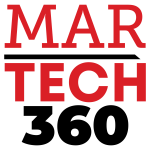In just a few years, OpenAI grew from a small research team to a worldwide leader in artificial intelligence. This transformation centers on a strong growth strategy. It uses advanced marketing technology (Martech) to drive success. OpenAI is shaping AI’s future. It does this by aligning product innovation, user engagement, and data-driven marketing tools. This approach also helps tech companies grow quickly.
This article explores OpenAI’s Martech-driven growth engine. It shows how this AI leader speeds up adoption and stays ahead of competitors.
The Martech Landscape
Martech includes tools that help businesses simplify, automate, and track marketing efforts. With over 14,100 Martech tools available in 2024, the right stack can be a game-changer. For a company like OpenAI, using Martech is essential. Their product, AI, is both technical and transformative.
OpenAI uses a mix of Martech platforms to enhance each step of the customer journey.
This includes:
- Customer relationship management (CRM) systems
- Email automation tools
- Customer data platforms (CDPs)
- Analytics software
The goal? To create seamless, personalized experiences for users, developers, and enterprise clients alike.
Strategic Positioning is Making AI Accessible

One of OpenAI’s greatest achievements has been demystifying AI for the average user. OpenAI has made artificial intelligence easy to use. AI is practical and easy to use with friendly tools like ChatGPT and features for daily tasks.
This accessibility is no accident. It’s driven by strategic Martech use, including:
- Persona Development: OpenAI uses smart data analysis to build detailed user personas. It spots different groups like developers, educators, businesses, and hobbyists.
- Content Personalization: OpenAI uses these personas to offer specific content for different audiences. This includes technical documents for coders and case studies for businesses.
- Funnel Optimization: Martech tools track user movement through the adoption funnel. They cover discovery, trial, and subscription stages. These tools also optimize the journey in real time.
The result? A frictionless onboarding experience that turns curiosity into sustained usage.
Also Read: How SPM Improves Sales Productivity And Revenue Growth
Leveraging First-Party Data
In an era where third-party cookies are fading, first-party data has become invaluable. OpenAI gathers user data directly from interactions on platforms such as ChatGPT. This includes API usage patterns and feedback from customers.
This data is stored and synthesized in sophisticated CDPs, allowing for:
- Personalized Outreach: Users get content and suggestions that match their behavior and preferences.
- Predictive Analytics: OpenAI uses machine learning on its data. This helps them predict user needs and improve product features ahead of time.
- Churn Reduction: OpenAI’s marketing and product teams can find drop-off points. Then, they can step in with re-engagement campaigns.
These insights boost engagement and guide product development. This creates a cycle of improvement.
Community-Driven Growth
OpenAI has cultivated a vibrant and active community of users and developers. Martech is key to turning this community into a strong growth engine. As of December 2024, per Similarweb, ChatGPT has over 3,7 billion visits in a month with an average session duration of 6 minutes and 25 seconds.
- Social Listening Tools: Brandwatch and Sprout Social help OpenAI track sentiment. They also let OpenAI reply to feedback and spot trending topics.
- User-Generated Content: Developers display their projects. Educators share lesson plans with AI. Creators build ChatGPT plugins. This all boosts the brand.
- Referral Programs and Gamification: Martech systems track user referrals and rewards. This creates viral loops.
OpenAI empowers its community. This turns users into brand advocates. As a result, it greatly expands its reach without spending much on ads.
Product-Led Growth (PLG)
OpenAI’s growth strategy features product-led growth (PLG). Here, the product does the marketing on its own. Here, Martech is tightly integrated into the product experience.
- In-App Messaging: Tools like Intercom or Drift allow real-time support and onboarding tips.
- Feature Rollouts: A/B testing platforms let OpenAI try new features with different user groups before launching them globally.
- Behavioral Triggers: We sends emails or push notifications when users take certain actions. This nudges engagement at the perfect moment.
This integration helps users see value fast. This is important for keeping them around and building loyalty.
AI-Powered Martech
Ironically, one of OpenAI’s biggest Martech advantages is its own technology. Using AI in its marketing stack helps the company improve continuously through feedback.
- AI tools like GPT can create personalized emails. They can also generate ad copy and automate knowledge base articles.
- Sentiment Analysis: AI checks feedback from reviews, tickets, and forums. It helps shape tone and messaging.
- Dynamic Pricing Models: Predictive algorithms find the best pricing tiers. They consider usage and industry benchmarks.
This loop increases efficiency. It helps OpenAI stand out from competitors who still rely on manual methods.
Enterprise Outreach
ChatGPT shows OpenAI to the world, but the company is quickly expanding its enterprise services. Martech enables OpenAI to tailor its approach to B2B audiences.
- Account-Based Marketing (ABM): Use tools like HubSpot and Terminus to run targeted campaigns for specific companies and industries.
- Lead Scoring & Nurturing: AI-powered CRMs automatically rank and qualify leads. This helps sales teams focus on the most valuable opportunities.
- Pipeline Analytics: Dashboards provide real-time visibility into deal progression, bottlenecks, and ROI.
This data-driven method helps enterprise clients get personalized and timely messages. This speeds up their journey to conversion.
The Metrics That Matter
OpenAI’s Martech strategy is only as good as the metrics it moves. The company tracks a range of KPIs, including:
- User Retention and Daily Active Users (DAUs)
- Customer Lifetime Value (CLTV)
- Conversion Rates Across Funnels
- Net Promoter Score (NPS)
These insights aren’t just numbers on a dashboard. They directly inform strategic decisions across marketing, product, and customer success teams.
Challenges and Future Outlook
No strategy is without hurdles. OpenAI has two big tasks: keeping user trust and driving innovation. Martech must be deployed ethically, ensuring transparency in data collection and usage.
OpenAI plans to grow in international markets. It will also focus on education and tools for real-time collaboration. Martech will remain essential. It helps with localization, real-time engagement, and consistency across platforms.
Martech as a Strategic Superpower
OpenAI’s rise to prominence is no accident. At the core of its AI breakthroughs is a strong growth engine, fueled by smart and scalable Martech. OpenAI blends advanced tools with a focus on users. This approach speeds up AI adoption and sets a new standard for growth in the tech industry.
For marketers, product leaders, and founders, OpenAI’s approach is a strong guide. Invest in Martech not just as a tool, but as a strategic force. It can drive innovation, boost engagement, and create a global impact.

